Local Contractors for Bathroom Remodel: Your Guide to Success
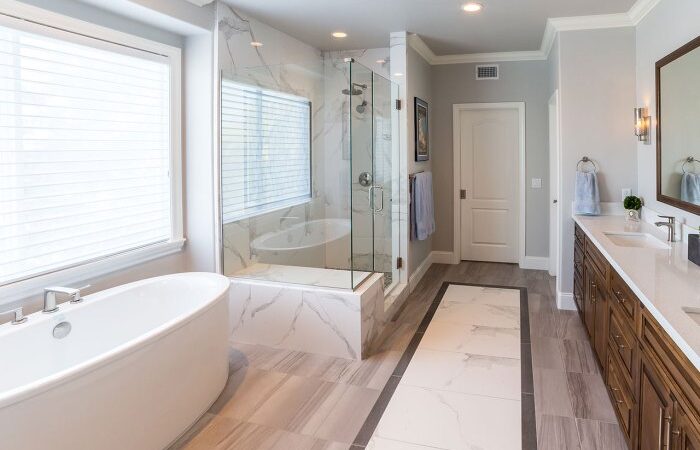
Local contractors for bathroom remodeling are your key to a successful and personalized bathroom transformation. They bring a unique understanding of local building codes, have established relationships with suppliers, and can offer tailored services that meet your specific needs. From initial planning to completion, a local contractor can guide you through every step, ensuring your vision becomes a reality.
Choosing the right contractor is crucial. They should possess the expertise, experience, and communication skills to manage your project effectively. By working with a local professional, you can expect personalized attention, a deeper understanding of your local market, and the peace of mind that comes from having a trusted partner on your side.
The Importance of Local Contractors: Local Contractors For Bathroom Remodel
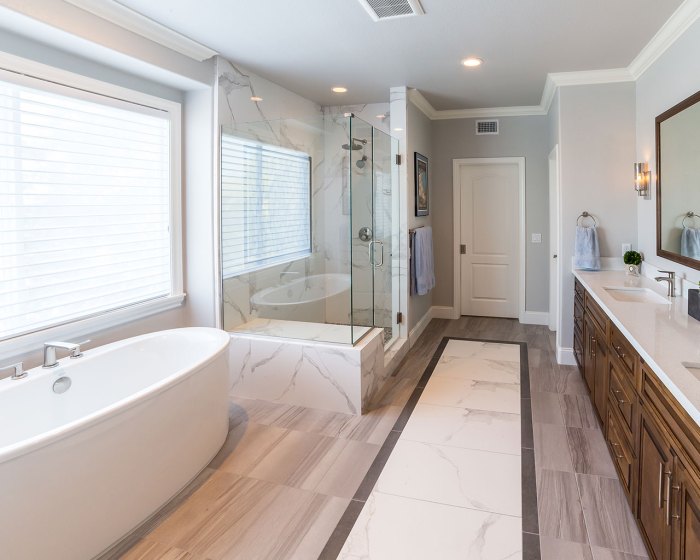
When it comes to your bathroom remodel, choosing the right contractor is crucial. While you might be tempted to go with the cheapest option or a contractor from outside your area, there are significant advantages to hiring a local contractor.
Local contractors bring a unique blend of expertise, familiarity, and connections that can greatly benefit your project.
Personalized Service and Local Expertise
Local contractors are deeply invested in their community. They have a vested interest in providing excellent service and building strong relationships with their clients. This often translates into more personalized attention, greater responsiveness to your needs, and a willingness to go the extra mile to ensure your satisfaction.
Moreover, local contractors have a deep understanding of local building codes, permitting processes, and the nuances of working with local suppliers. They can navigate these complexities efficiently, saving you time and potential headaches.
Strong Local Relationships and Networks
Local contractors have established relationships with local suppliers, subcontractors, and other professionals in the area. This network of connections can be a valuable asset for your bathroom remodel. For example, a local contractor may be able to secure better pricing on materials or access specialized services more readily than a contractor from outside the area.
They can also tap into their network to recommend reliable plumbers, electricians, and other professionals who can contribute to the success of your project.
Finding Reputable Local Contractors
Finding a reputable local contractor is crucial for a successful bathroom remodel. Here are some tips:
- Ask for referrals: Talk to friends, family, and neighbors who have recently had bathroom remodels done. Their firsthand experience can provide valuable insights and recommendations.
- Check online reviews: Websites like Yelp, Angie’s List, and Houzz allow you to read reviews from previous clients and get a sense of a contractor’s reputation and work quality.
- Verify licenses and insurance: Ensure that the contractor is properly licensed and insured. This protects you from potential liability in case of accidents or damage.
- Get multiple quotes: Don’t settle for the first quote you receive. Get quotes from at least three different local contractors to compare pricing, services, and communication styles.
Understanding the Bathroom remodeling process
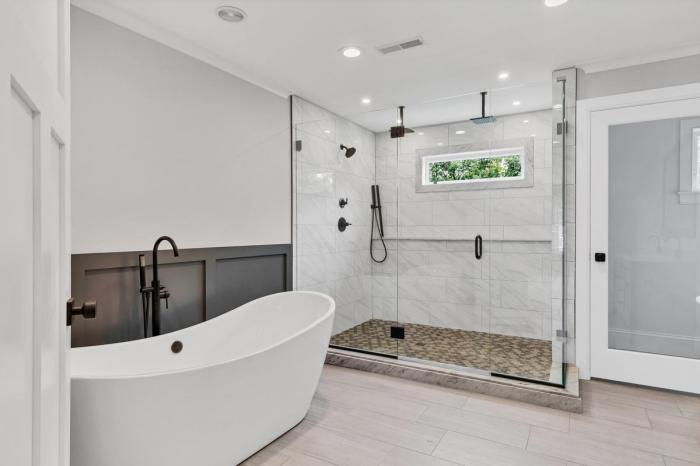
A successful bathroom remodel requires careful planning and execution, involving a series of steps that build upon each other. From initial design concepts to the final finishing touches, each stage plays a crucial role in achieving your desired outcome.
Design and Planning
The initial phase of a bathroom remodel involves defining your vision and translating it into a detailed plan. This stage sets the foundation for the entire project and ensures that the final result meets your specific needs and preferences.
- Define Your Needs and Preferences: Begin by clearly outlining your functional requirements and aesthetic preferences. Consider factors such as the size and layout of your bathroom, the desired style, and the intended use. For example, if you have a small bathroom, you may want to consider space-saving fixtures and design elements.
- Establish a Budget: Set a realistic budget that encompasses all aspects of the remodel, including materials, labor, permits, and unforeseen expenses. Research average costs for different materials and finishes to get a preliminary estimate.
- Create a Design Concept: Collaborate with a designer or architect to develop a comprehensive design plan that incorporates your preferences and addresses your functional needs. This plan should include detailed drawings, material specifications, and fixture selections.
- Obtain Necessary Permits: Depending on the scope of your project, you may need to obtain permits from your local building department. These permits ensure that your remodel complies with safety and building codes.
Material Selection
Choosing the right materials is crucial for both the functionality and aesthetics of your bathroom. The selection process should consider durability, water resistance, style, and budget.
- Flooring: Bathroom flooring must be waterproof, durable, and slip-resistant. Popular options include ceramic tiles, porcelain tiles, vinyl flooring, and natural stone.
- Walls and Ceilings: Bathroom walls and ceilings should be moisture-resistant and easy to clean. Ceramic tiles, waterproof paint, and moisture-resistant drywall are common choices.
- Fixtures: Selecting the right fixtures, such as toilets, sinks, showers, and tubs, is essential for both functionality and style. Consider factors like water efficiency, accessibility, and design.
- Countertops: Bathroom countertops should be durable, water-resistant, and easy to clean. Popular options include granite, quartz, laminate, and solid surface materials.
Demolition and Preparation
Once the design and material selection are finalized, the demolition phase begins. This involves removing existing fixtures, finishes, and structures to prepare the bathroom for the new construction.
- Remove Existing Fixtures: Carefully disconnect and remove the old toilet, sink, shower, tub, and any other existing fixtures.
- Remove Existing Finishes: Remove old flooring, wall coverings, and ceiling finishes. This may involve using tools such as a hammer, chisel, or saw.
- Prepare the Subfloor: Inspect and repair any damage to the subfloor before installing new flooring.
- Install New Plumbing and Electrical: If necessary, install new plumbing and electrical lines to accommodate the new fixtures and design.
Plumbing and Electrical
The plumbing and electrical work is essential for the functionality and safety of your bathroom. It involves installing new fixtures, pipes, and wiring to meet the requirements of the new design.
- Install New Fixtures: Install the new toilet, sink, shower, tub, and other fixtures according to the design plan.
- Install Plumbing Lines: Install new water supply lines and drain lines to connect the new fixtures.
- Install Electrical Wiring: Install new electrical wiring for lighting, ventilation, and any other electrical appliances.
Finishing Touches
The final stage of a bathroom remodel involves installing the finishing touches, including flooring, wall coverings, countertops, and fixtures.
- Install Flooring: Install the new flooring according to the design plan, ensuring proper installation and sealing.
- Install Wall Coverings: Install the new wall coverings, such as tiles, paint, or wallpaper, according to the design plan.
- Install Countertops: Install the new countertops, ensuring proper installation and sealing.
- Install Fixtures: Install the new fixtures, including faucets, towel bars, and other accessories.
Sample Timeline
The following is a sample timeline for a bathroom remodel project, highlighting potential milestones and durations:
| Milestone | Duration |
|---|---|
| Design and Planning | 2-4 weeks |
| Material Selection | 1-2 weeks |
| Demolition and Preparation | 1-2 weeks |
| Plumbing and Electrical | 2-3 weeks |
| Finishing Touches | 2-3 weeks |
Essential Considerations for Bathroom Remodels
A bathroom remodel is a significant investment, and careful planning is crucial to ensure a successful and satisfying outcome. This section delves into essential considerations that will help you navigate the remodeling process effectively.
Bathroom Remodeling Trends and Styles
Bathroom design trends constantly evolve, reflecting changing tastes and preferences. Understanding these trends can inspire your remodel and ensure your bathroom remains stylish and functional for years to come.
- Spa-like Retreats: This trend emphasizes creating a luxurious and relaxing sanctuary. Features include soaking tubs, walk-in showers with multiple showerheads, heated floors, and natural stone or tile finishes. Imagine a bathroom with a freestanding soaking tub nestled in a corner, surrounded by soft lighting and the gentle sound of a waterfall showerhead.
- Minimalism and Functionality: This style prioritizes clean lines, simple fixtures, and open spaces. Bathrooms feature sleek cabinets, minimalist vanities, and neutral color palettes. A minimalist bathroom could feature a floating vanity with a large mirror, integrated lighting, and a streamlined shower with a single rain showerhead.
- Smart Technology Integration: Modern bathrooms embrace smart technology, enhancing convenience and efficiency. Features include voice-activated lighting and faucets, touchless toilets, and smart mirrors with integrated displays. Imagine stepping into your bathroom turning on the lights and adjusting the temperature with a simple voice command.
- Sustainability and Eco-Friendly Features: Sustainability is becoming increasingly important in bathroom design. Water-efficient fixtures, low-flow toilets, and eco-friendly materials are popular choices. A sustainable bathroom might incorporate a dual-flush toilet, a low-flow showerhead, and recycled materials for countertops and flooring.
Factors Influencing Bathroom Remodel Costs
Understanding the factors that impact the cost of a bathroom remodel will help you budget effectively and make informed decisions about your project.
- Material Choices: The materials you select for your bathroom can significantly influence the overall cost. High-end materials like natural stone, solid wood cabinetry, and premium fixtures will be more expensive than standard options. For example, using granite countertops instead of laminate will increase the cost, but it also adds value and durability.
- Labor Rates: Labor costs are a significant part of a bathroom remodel. Local labor rates, the complexity of the project, and the experience of the contractor all play a role. Hiring skilled and experienced contractors may result in higher labor costs, but it can also lead to a higher-quality and longer-lasting remodel.
- Project Complexity: The complexity of your bathroom remodel will directly affect the cost. Major structural changes, plumbing and electrical work, and custom features will all add to the overall expense. For example, moving plumbing fixtures or adding a new window will increase the cost and complexity of the project.
- Unexpected Issues: During a remodel, unexpected issues can arise, such as hidden plumbing problems or damaged framing. These unforeseen circumstances can add to the cost and timeline of the project. It’s wise to factor in a contingency budget for unexpected expenses.
Maximizing Bathroom Space and Functionality
Making the most of your bathroom space is essential, especially in smaller bathrooms. Here are practical tips for maximizing space and functionality:
- Storage Solutions: Utilize vertical space with tall cabinets, floating shelves, and mirrored storage to create a sense of openness and minimize clutter. Consider using a medicine cabinet with mirrored doors to reflect light and create a more spacious feel.
- Layout Optimization: Plan the layout of your bathroom carefully to ensure efficient use of space. Consider a walk-in shower instead of a tub, especially in smaller bathrooms. If possible, move the toilet to a less prominent location to free up space for other features.
- Accessibility Features: Incorporating accessibility features can enhance the usability of your bathroom for everyone. This includes features like grab bars, walk-in showers with low thresholds, and adjustable showerheads. Even if you don’t need these features now, they can increase the resale value of your home in the future.
Working with Local Contractors for Bathroom Remodels
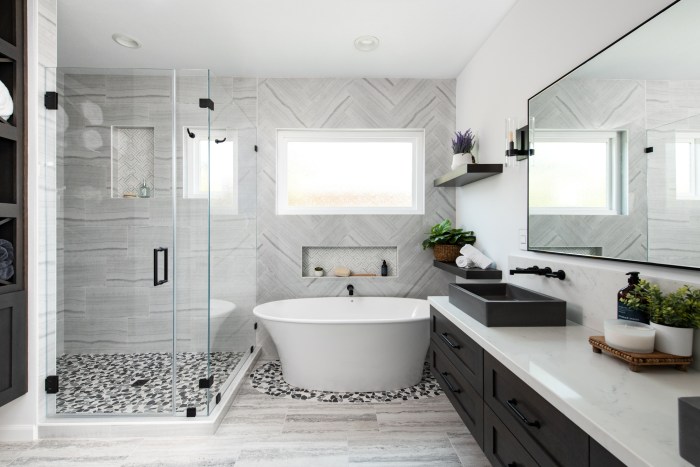
A successful bathroom remodel relies heavily on a strong partnership between you and your chosen contractor. Open communication, shared understanding, and a collaborative approach are crucial to ensure a smooth and successful project.
Building a Strong Relationship with local contractors for bathroom remodeling
Effective communication is paramount throughout the entire remodeling process. This means a clear and consistent exchange of information, ideas, and expectations. Regular meetings, detailed project updates, and prompt responses to inquiries are essential for maintaining transparency and trust.
- Establish a clear communication channel. This can be through phone calls, emails, or even a dedicated project management platform.
- Schedule regular meetings to discuss progress, address concerns, and make necessary adjustments.
- Maintain open and honest communication, expressing your concerns and expectations clearly.
- Encourage your contractor to ask questions and seek clarification whenever needed.
Assessing Contractor Experience and Qualifications
Before embarking on a bathroom remodel, it’s essential to thoroughly evaluate the experience and qualifications of potential contractors. This involves asking targeted questions to assess their understanding of the project, their approach to challenges, and their commitment to quality workmanship.
- Experience: Inquire about the contractor’s experience with bathroom remodels, including the types of projects they have completed and their familiarity with different materials and techniques. Ask for specific examples of similar projects they have undertaken and the challenges they encountered.
- Qualifications: Verify the contractor’s licenses, certifications, and insurance. Ask for references from past clients and inquire about their satisfaction with the contractor’s work.
- Communication Style: Observe how the contractor responds to your questions and how they communicate their ideas. Look for a contractor who is responsive, clear, and willing to listen to your concerns.
Negotiating Contracts and Managing Expectations
A well-defined contract serves as a roadmap for the entire remodeling process, outlining the scope of work, timelines, budget, and responsibilities of both parties. It is crucial to carefully review and negotiate the contract to ensure it accurately reflects your expectations and protects your interests.
- Detailed Scope of Work: The contract should clearly define the scope of work, including all the tasks involved in the bathroom remodel. Specify the materials to be used, the finishes to be applied, and any specific design elements you require.
- Timeline and Payment Schedule: Establish a realistic timeline for the project, including milestones and deadlines. Define the payment schedule, including the percentage of payment due upon completion of each milestone.
- Contingency Planning: Incorporate a contingency plan to address unforeseen issues that may arise during the remodel. This could include clauses for cost overruns, delays, or changes in the scope of work.
- Warranties and Guarantees: Negotiate warranties and guarantees for the materials and workmanship provided by the contractor. This protects against defects and ensures the quality of the finished project.
The Benefits of a Well-Executed Bathroom Remodel

A bathroom remodel can be a significant investment, but the potential benefits extend far beyond simply updating the look and feel of your space. A well-planned and executed remodel can enhance your daily life, increase your home’s value, and contribute to a more sustainable and energy-efficient lifestyle.
Increased Home Value and Return on Investment
A well-executed bathroom remodel can significantly boost your home’s value, offering a substantial return on investment. Real estate professionals often cite bathrooms as one of the most important rooms when it comes to attracting buyers and influencing a home’s overall value.
A modern, updated bathroom can create a positive first impression, appealing to a wider range of potential buyers. According to the National Association of Realtors (NAR), bathroom remodels typically recoup around 60% to 70% of their cost, making them a wise investment for homeowners looking to increase their home’s value.
The specific return on investment can vary depending on factors such as the scope of the remodel, the quality of materials used, and the local real estate market.
Enhanced Comfort, Convenience, and Relaxation
A well-designed bathroom can be a sanctuary, offering greater comfort, convenience, and relaxation. A thoughtfully planned remodel can incorporate features that enhance daily life and create a more enjoyable experience.
- Increased Storage and Organization: A well-organized bathroom reduces clutter and promotes a sense of calm. Built-in cabinets, drawers, and shelves provide ample storage for toiletries, towels, and other essentials.
- Improved Accessibility and Safety: For aging homeowners or individuals with mobility limitations, a bathroom remodel can improve accessibility and safety. Features such as grab bars, walk-in showers, and non-slip flooring can make the bathroom a safer and more comfortable space.
- Enhanced Aesthetics and Mood: A well-designed bathroom can create a calming and inviting atmosphere. Natural light, soft colors, and spa-like features can enhance the overall ambiance and create a space for relaxation and rejuvenation.
Sustainable Materials and Energy Efficiency
Incorporating sustainable materials and energy-efficient fixtures in a bathroom remodel can have a positive impact on the environment and your wallet. Sustainable choices not only reduce your environmental footprint but also contribute to long-term cost savings.
- Low-Flow Fixtures: Low-flow showerheads, faucets, and toilets conserve water without sacrificing performance. These fixtures can significantly reduce your water consumption, lowering your utility bills and conserving this precious resource.
- Energy-Efficient Lighting: LED lighting is highly energy-efficient, consuming less energy than traditional incandescent bulbs. LEDs also have a longer lifespan, reducing the need for frequent replacements.
- Recycled and Sustainable Materials: Choosing recycled or sustainable materials for countertops, flooring, and cabinetry reduces the environmental impact of your remodel. Options such as bamboo flooring, recycled glass tiles, and countertops made from recycled materials are becoming increasingly popular and offer a stylish and eco-friendly choice.
Epilogue
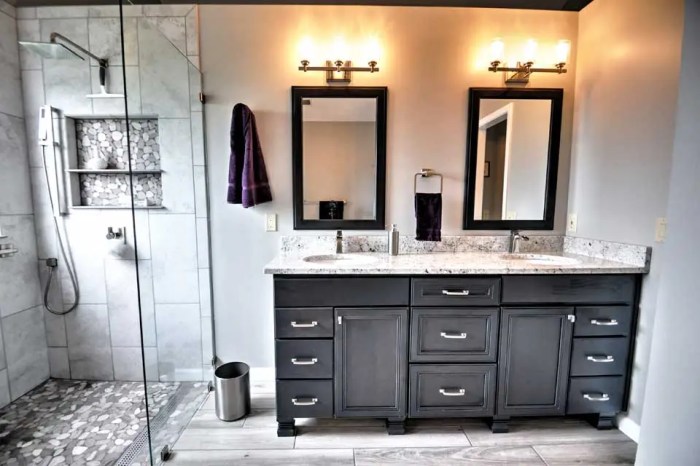
Transforming your bathroom into a haven of relaxation and functionality is within reach with the right local contractor. By understanding the process, considering your budget and design preferences, and fostering clear communication, you can achieve a bathroom remodel that exceeds your expectations.
Remember, a well-executed bathroom remodel can not only enhance your daily life but also increase your home’s value, making it a smart investment for years to come.
Comments are closed.